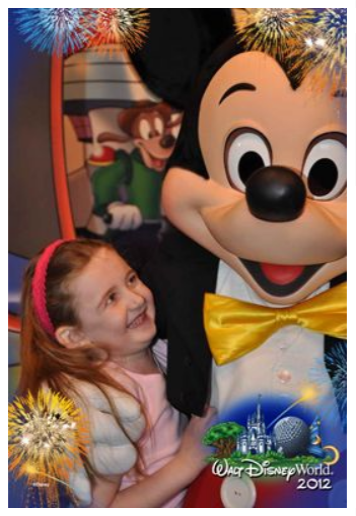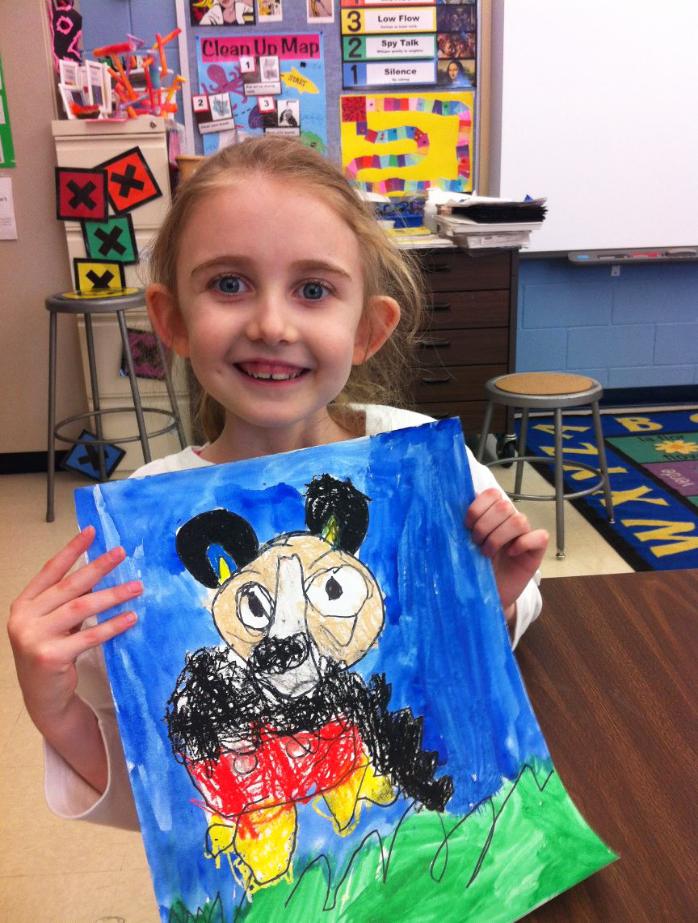










March 8, 2013
Mickey Dog | Autism and the Inclusive Classroom
Mickey Dog | Autism and the Inclusive Classroom
You can see the pride gleaming from her face.
What you can't see is the pride that echoed in the voices of each and
every member of her team as they reported to us about Caroline's
"Mickey Dog."
We all knew it was a symbol. A symbol of how far she's come. A
symbol of the success of the inclusive classroom. A manifestation
of a thoughtfully written IEP driven by a most dedicated team of
teachers, therapists, her aide and even the school principal.
Everyone working together with a room full of all-star kids to
ensure the success of every single student in the room, no matter
their needs. To help them grow as a community, each with unique
gifts.
:::::
Determining school placement for special needs children is
something many parents approach with trepidation. Planning the
environment that will suit their needs, while not knowing how their
needs will change and exactly what each option will look like on a
daily basis is daunting, to say the least.
At Caroline's IEP meeting to prepare for first grade, there was much
discussion regarding whether she would be best suited in a general
education classroom or spending half of the day in a special needs
classroom at a different school.
We struggled with the decision. Would her academic and therapy
needs be met in a general classroom or would her anxiety make it
too difficult to focus? Would her social needs be met in a special
needs classroom? Would there be the necessary peer models?
Ultimately, we agreed that a full day spent in general education
with an aide would be the best placement. And as the year unfolds,
we have been blessed with many reminders that it was.
We were reminded when we saw Mickey Dog. We were reminded
when she waltzed across the balance beam on parent participation
gymnastics day. We were reminded when she sat front and center
alongside classmates during an all-school assembly. And recently,
we were reminded when she stood up, before her entire class, and
gave an economics project presentation.
None of it would be possible without her devoted, creative, and
compassionate team. Together, they have made the classrooms
ready for her... adapting them into spaces able to meet her needs
and together they have made her year a huge success. For that,
we simply could not be more grateful.
For anyone considering an inclusive classroom, an excellent article
with many strategies for maximizing potential and taking advantage
of the environment is: Teaching Autism Students in Inclusive
Classrooms. For even more, the book "You're Going to Love This
Kid," was written especially for teachers. (see link to the right).
Caroline's entire team is reading and discussing it at biweekly
meetings. Yes, we have truly been blessed with a remarkably
dedicated group!
Inclusive classrooms may not be for every learner. Some children
might need a more private space. Some children might need to
receive their academic instruction separate from their social
interaction. Perhaps in the future Caroline's needs will change. But
for now, the inclusive classroom is working for her.
She's happy to be in an environment where she can just be one of
the friends. Climbing the monkey bars. Reading a library book.
Painting a blue dog.... just one of the friends.
Doing what was once said to be impossible. Radiating with pride.
A pride that's been caught by everyone who witnesses all that IS
possible from one little girl with one tremendous team, seventeen
generous classmates and BIG plans for her future.
What you can't see is the pride that echoed in the voices of each and
every member of her team as they reported to us about Caroline's
"Mickey Dog."
We all knew it was a symbol. A symbol of how far she's come. A
symbol of the success of the inclusive classroom. A manifestation
of a thoughtfully written IEP driven by a most dedicated team of
teachers, therapists, her aide and even the school principal.
Everyone working together with a room full of all-star kids to
ensure the success of every single student in the room, no matter
their needs. To help them grow as a community, each with unique
gifts.
:::::
Determining school placement for special needs children is
something many parents approach with trepidation. Planning the
environment that will suit their needs, while not knowing how their
needs will change and exactly what each option will look like on a
daily basis is daunting, to say the least.
At Caroline's IEP meeting to prepare for first grade, there was much
discussion regarding whether she would be best suited in a general
education classroom or spending half of the day in a special needs
classroom at a different school.
We struggled with the decision. Would her academic and therapy
needs be met in a general classroom or would her anxiety make it
too difficult to focus? Would her social needs be met in a special
needs classroom? Would there be the necessary peer models?
Ultimately, we agreed that a full day spent in general education
with an aide would be the best placement. And as the year unfolds,
we have been blessed with many reminders that it was.
We were reminded when we saw Mickey Dog. We were reminded
when she waltzed across the balance beam on parent participation
gymnastics day. We were reminded when she sat front and center
alongside classmates during an all-school assembly. And recently,
we were reminded when she stood up, before her entire class, and
gave an economics project presentation.
None of it would be possible without her devoted, creative, and
compassionate team. Together, they have made the classrooms
ready for her... adapting them into spaces able to meet her needs
and together they have made her year a huge success. For that,
we simply could not be more grateful.
For anyone considering an inclusive classroom, an excellent article
with many strategies for maximizing potential and taking advantage
of the environment is: Teaching Autism Students in Inclusive
Classrooms. For even more, the book "You're Going to Love This
Kid," was written especially for teachers. (see link to the right).
Caroline's entire team is reading and discussing it at biweekly
meetings. Yes, we have truly been blessed with a remarkably
dedicated group!
Inclusive classrooms may not be for every learner. Some children
might need a more private space. Some children might need to
receive their academic instruction separate from their social
interaction. Perhaps in the future Caroline's needs will change. But
for now, the inclusive classroom is working for her.
She's happy to be in an environment where she can just be one of
the friends. Climbing the monkey bars. Reading a library book.
Painting a blue dog.... just one of the friends.
Doing what was once said to be impossible. Radiating with pride.
A pride that's been caught by everyone who witnesses all that IS
possible from one little girl with one tremendous team, seventeen
generous classmates and BIG plans for her future.

| For future blog notifications: |
The assignment was straightforward. The students would study the
renowned Blue Dog paintings of George Rodrigue and create their own
'dog' as an expression of themselves. Some may paint dogs. Others
may paint bears. Not everyone's would be blue. But each and every
one of them would be inspired by something meaningful.
Sounds simple enough for a room full of first graders. But what about
Caroline? Would she understand? Could she follow the directions?
Would she need a modified lesson? Maybe she would be better served
attending an extra music class that week?
No, her team concluded. The classroom is inclusive. If her classmates
are painting, Caroline will paint!
Alongside her friends, she carefully studied George's images. Her aide
modeled the instructions. And then she set to work. After meticulous
attention to detail, her creation was complete:
renowned Blue Dog paintings of George Rodrigue and create their own
'dog' as an expression of themselves. Some may paint dogs. Others
may paint bears. Not everyone's would be blue. But each and every
one of them would be inspired by something meaningful.
Sounds simple enough for a room full of first graders. But what about
Caroline? Would she understand? Could she follow the directions?
Would she need a modified lesson? Maybe she would be better served
attending an extra music class that week?
No, her team concluded. The classroom is inclusive. If her classmates
are painting, Caroline will paint!
Alongside her friends, she carefully studied George's images. Her aide
modeled the instructions. And then she set to work. After meticulous
attention to detail, her creation was complete:

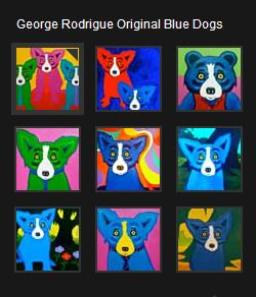


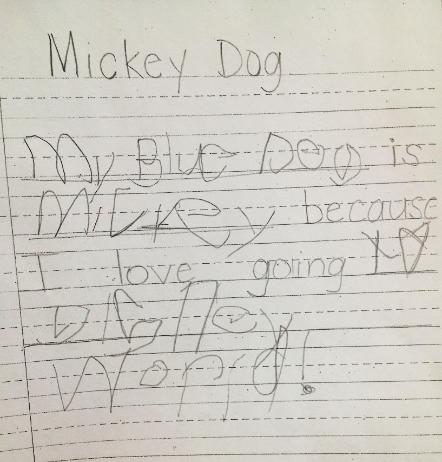


Artist's impression:
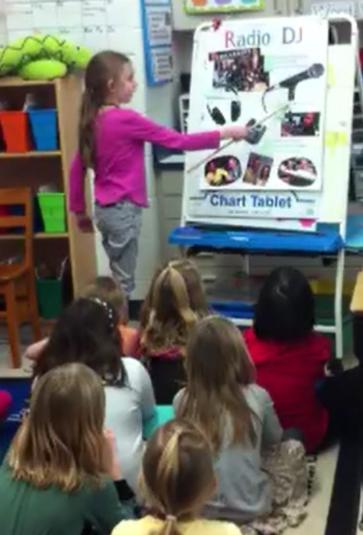
| "An inclusive classroom teaches a child with disabilities how to interact with other people, while the typically developing child learns compassion and empathy." -- Learning with Autism |
| Inclusion in school requires a shift in the paradigm; instead of getting the child ready for the regular class, the regular class gets ready for the child... It is about being included in life and participating as a member of the community.” -- Learning with Autism |
| Excellent book for teachers, administrators, aides and parents. |


